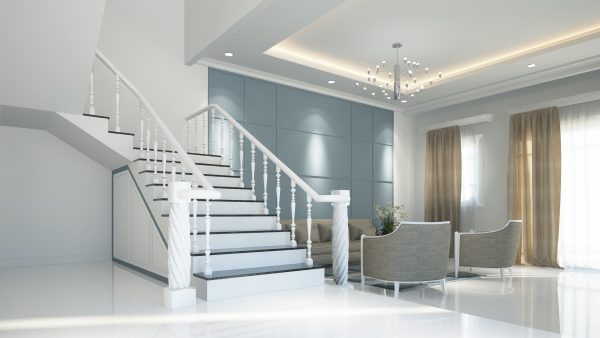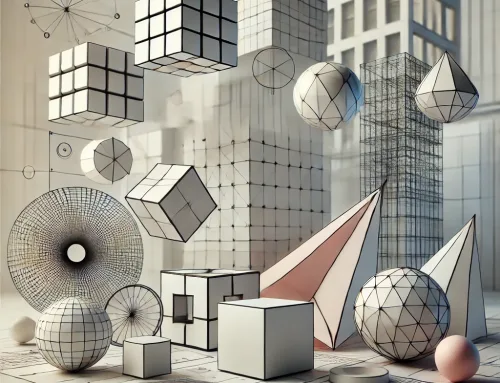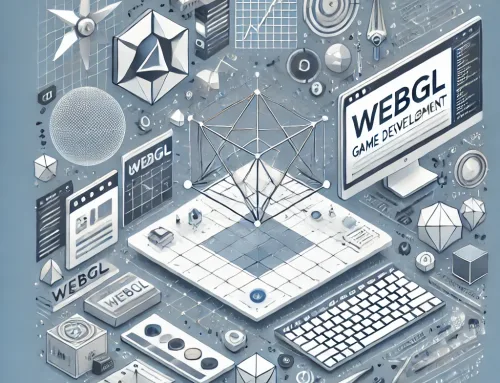Warum Skinning für jedes Rigging-Projekt von großer Bedeutung ist.
Es gibt viele Dinge, die in die Entwicklung eines erfolgreichen Rigs einfließen. Eines der wichtigsten ist das korrekte Skinning des Skeletts mit dem Charakter oder Objekt.
Ohne Skinning würde sich das Mesh nicht richtig verformen und unabhängig davon wie groß das Rigg-Setup ist, wenn es nicht richtig geskinnt ist, wird das gesamte Rigg leiden.
In dem folgenden Artikel werden wir Ihnen die hohe Relevanz des Skinnings verdeutlichen. Zudem geben wir Ihnen einige hilfreiche Tipps mit auf den Weg, damit Sie Ihre Rigs in Ihrem nächsten Projekt sicherer skinnen können.

Was ist Skinning?
Skinning ist der Prozess des Bindings des eigentlichen 3D-Meshes an das von Ihnen erstellte Joint-Setup. Das bedeutet, dass die von Ihnen erstellten Bindings Einfluss auf die Ecken Ihres Modells haben und diese entsprechend verschieben. Die Schwierigkeit dabei ist, dass ein Rigg typischerweise aus Hunderten von Einzel-Bindings besteht und die meisten Bindings müssen Einfluss auf nur bestimmte Teile des Meshes haben. Zum Beispiel sollte das Gelenk im Handgelenk einer Figur höchstwahrscheinlich nur diesen Bereich des Modells kontrollieren. Wenn Sie das Handgelenk bewegen und dies dabei die Schulter des Charakters beeinflusst, würde das natürlich nicht korrekt aussehen. An dieser Stelle kommt das Skinning ins Spiel. Das Skinning ist nicht nur für die Erstellung eines Modells unerlässlich, das sich präzise an den richtigen Stellen bewegt, sondern auch für die korrekte Verformung.
Wenn Sie ein Maya-Benutzer sind, ist Ihnen wahrscheinlich der Befehl Smooth Bind bekannt. Dadurch wird das gesamte Skelett mit einem Klick auf einen Button tatsächlich an das Mesh gebunden. Natürlich sind die Dinge nicht so einfach und Smooth Bind ist nur der erste Schritt, um das Skelett am 3D-Mesh zu skinnen. Standardmäßig funktioniert Smooth Bind, indem es Nodes findet, die den Gelenken am nächsten sind, und den Einfluss basierend auf dem Abstand zuweist. Das ist alles gut und schön, aber der Computer macht nicht die beste Arbeit, was bedeutet, dass es an Ihnen liegt, die Aufgabe zu erledigen und den richtigen Einfluss manuell zuzuweisen, sobald Sie das Mesh an das Skelett gebunden haben. Wäre es nicht schön, wenn der Job per Knopfdruck erledigt werden könnte? Ein Teil des Skinning-Prozesses wird als Weight Painting bezeichnet, was Ihnen vielleicht bekannt ist. Das Painting der Weights ist eigentlich das, was es Ihnen ermöglicht, den richtigen Einfluss zu bestimmen, dass jede Verbindung auf Ihr Mesh hat und ist ein wichtiger Teil des Skinning-Prozesses.
Wie bereits erwähnt, wenn das Skelett an das Mesh gebunden ist, weiß der Computer nicht genau, wie viel Einfluss jedes Gelenk auf jedes Node haben sollte. Genau hier kommt das Weight Painting ins Spiel, so dass Sie beginnen können, den richtigen Einfluss manuell zuzuweisen.
Verschieben von Gelenken zur Darstellung des Einflusses.
Wenn Sie mit dem Skinning-Prozess beginnen, macht es Sinn, zunächst einfach mit der Arbeit zu beginnen. Beginnen Sie von einem Bereich des Modells aus, sorgen Sie für einen guten Look und gehen Sie anschließend zum nächsten Bereich über. Anstatt zu versuchen, jedes Node richtig zu bemalen, können Sie ein Standard-Binding anwenden und einfach damit beginnen, jede Verbindung zu bewegen und sicherzustellen, dass sie sich verformt und Ihr Mesh genau so beeinflusst, wie Sie es wünschen. Sie können sogar damit beginnen, sehr einfache Animationen auf ihrem Rig zu erstellen, jedes Gelenk zu bewegen und anschließend zurück zu gehen und die Animation genau zu studieren. Höchstwahrscheinlich werden Sie anfangen, Verformungsprobleme und Gelenke zu sehen, die nicht den richtigen Einfluss auf Ihr Modell haben. Dies wird es Ihnen ermöglichen, die Problemzonen sehr leicht zu erkennen und auf dieser Basis die Probleme beim Skinning zu lösen, indem Sie die Gewichte bemalen. Das bedeutet, dass Sie sich auf die Bereiche konzentrieren können, die am stärksten eine Bearbeitung nötig haben.
Spiegeln der Gewichte.
Das richtige Skinning Ihres Geräts kann ein sehr mühsamer und zeitaufwendiger Prozess sein. Durch das Spiegeln Ihrer Skin-Weights können Sie sich möglicherweise eine Menge Arbeit ersparen. So können Sie z.B. Stunden damit verbracht haben, die Weights auf den linken Arm zu bemalen, so dass es jetzt perfekt aussieht. Die gleiche Zeit für den rechten Arm aufzuwenden, kann wie eine Verschwendung erscheinen, denn beide Bereiche werden möglicherweise den gleichen Einfluss benötigen, der jedem Gelenk zugeordnet ist. Durch Spiegeln können Sie die Weights des linken Arms einfach auf den rechten Arm kopieren und in wenigen Minuten verformt sich der rechte Arm genau so, wie Sie es wünschen, ohne dass Sie tatsächlich noch mehr abziehen müssen.
Stellen Sie sicher, dass Ihre Nodes zusammengeführt werden.
Beim Skinning weisen Sie jedem Binding einen Einfluss auf die Ecken Ihres Modells zu, um Probleme zu vermeiden, sollten Sie immer sicherstellen, dass alle Ecken Ihres Meshes zusammengefügt sind. Wenn Sie anfangen, Weights mit Ecken zu malen, die nicht verbunden sind, erzeugt es Löcher in Ihrem Mesh, und Sie werden diese Löcher meistens nur sehen können, wenn Sie die Weights bemalen, so dass Sie Ihre gesamte Arbeit wieder rückgängig machen müssen. Um dieses Problem zu vermeiden, überprüfen Sie einfach alle Nodes, von denen Sie denken, dass sie nicht zusammengeführt wurden oder Bereiche, die Sie vergessen haben. Skinning kann ein langer Prozess sein, aber wenn Sie es besser verstehen und diese Techniken in Betracht ziehen, werden Sie Ihren Workflow beschleunigen. Um tiefer in die Materie einzusteigen, sollten Sie sich mit den Speed Skinning Techniken in Maya beschäftigen und Ihre Skills mithilfe eine Vielzahl von weiteren Rigging-Tutorials weiter ausbauen.
Vielen Dank für Ihren Besuch.


